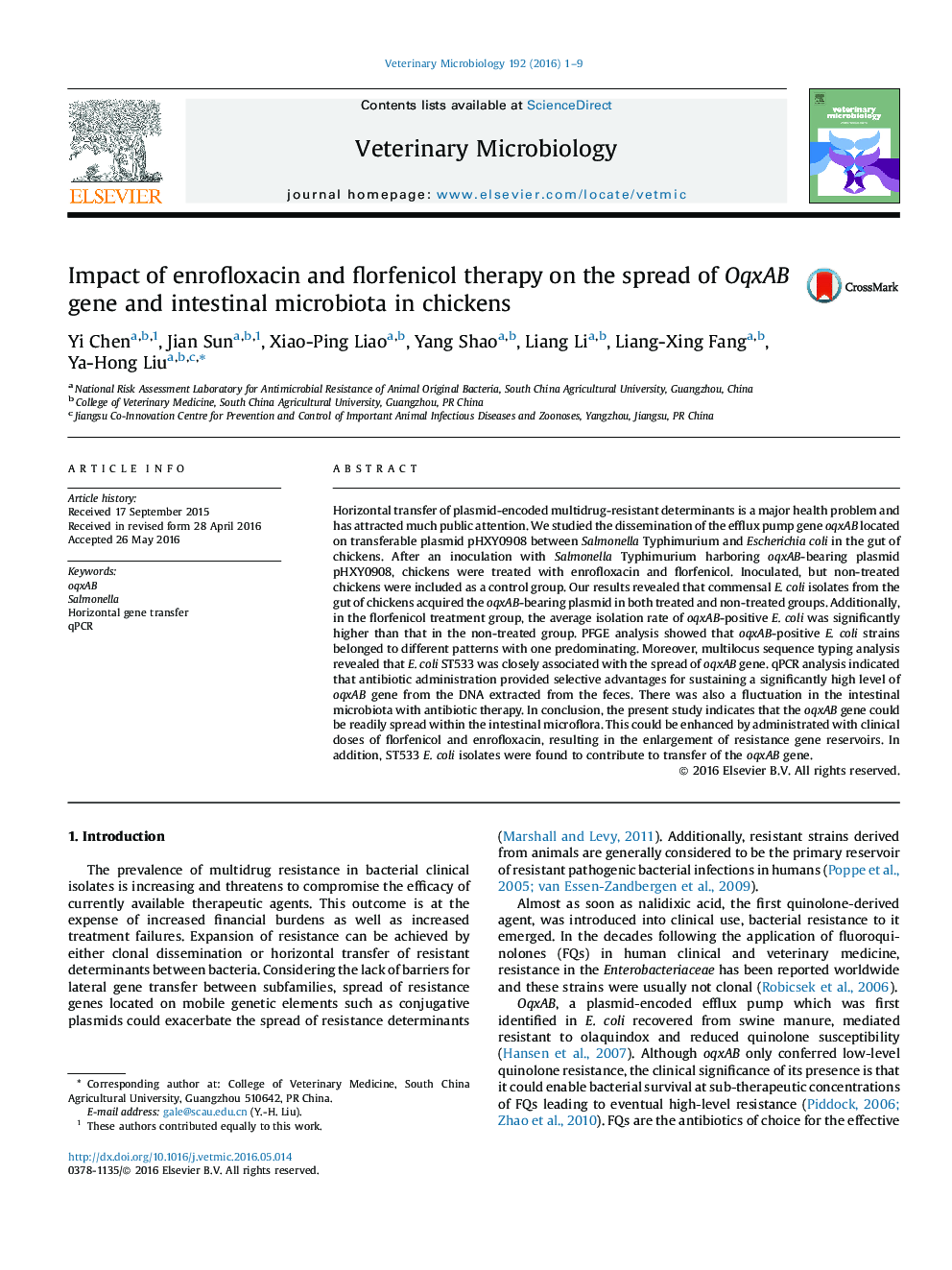| کد مقاله | کد نشریه | سال انتشار | مقاله انگلیسی | نسخه تمام متن |
|---|---|---|---|---|
| 5799611 | 1555331 | 2016 | 9 صفحه PDF | دانلود رایگان |

- In vivo transfer of the plasmid-encoded oqxAB gene from S. Typhimurium to E. coli was investigated.
- PFGE analysis showed that oqxAB-positive E. coli strains isolated from chickens belonged to different patterns.
- E. coli ST533 was closely associated with the spread of oqxAB gene as illustrated by multilocus sequence typing.
- Clinical doses of florfenicol and enrofloxacin enhanced the selection for transconjugants.
Horizontal transfer of plasmid-encoded multidrug-resistant determinants is a major health problem and has attracted much public attention. We studied the dissemination of the efflux pump gene oqxAB located on transferable plasmid pHXY0908 between Salmonella Typhimurium and Escherichia coli in the gut of chickens. After an inoculation with Salmonella Typhimurium harboring oqxAB-bearing plasmid pHXY0908, chickens were treated with enrofloxacin and florfenicol. Inoculated, but non-treated chickens were included as a control group. Our results revealed that commensal E. coli isolates from the gut of chickens acquired the oqxAB-bearing plasmid in both treated and non-treated groups. Additionally, in the florfenicol treatment group, the average isolation rate of oqxAB-positive E. coli was significantly higher than that in the non-treated group. PFGE analysis showed that oqxAB-positive E. coli strains belonged to different patterns with one predominating. Moreover, multilocus sequence typing analysis revealed that E. coli ST533 was closely associated with the spread of oqxAB gene. qPCR analysis indicated that antibiotic administration provided selective advantages for sustaining a significantly high level of oqxAB gene from the DNA extracted from the feces. There was also a fluctuation in the intestinal microbiota with antibiotic therapy. In conclusion, the present study indicates that the oqxAB gene could be readily spread within the intestinal microflora. This could be enhanced by administrated with clinical doses of florfenicol and enrofloxacin, resulting in the enlargement of resistance gene reservoirs. In addition, ST533 E. coli isolates were found to contribute to transfer of the oqxAB gene.
Journal: Veterinary Microbiology - Volume 192, 30 August 2016, Pages 1-9